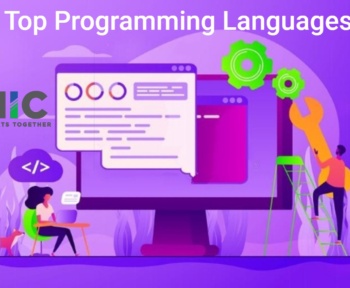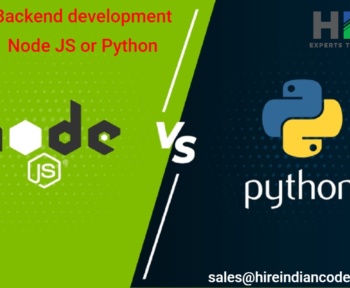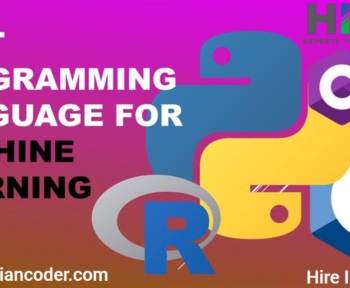The Internet of Things (IoT) continues to revolutionize various industries by connecting devices and enabling smarter operations. As we move further into 2024, the demand for skilled IoT developers is higher than ever. To succeed in this dynamic field, developers must equip themselves with a set of crucial skills. This article highlights the ten essential skills every IoT developer must master to thrive in the ever-evolving IoT landscape.
Proficiency in IoT Protocols
Mastering IoT protocols is fundamental for developers. These protocols facilitate communication between devices and ensure seamless data exchange.
Understanding MQTT and CoAP
MQTT (Message Queuing Telemetry Transport) and CoAP (Constrained Application Protocol) are lightweight protocols designed for resource-constrained environments. MQTT is popular for its simplicity and efficiency in delivering messages, making it ideal for IoT applications. CoAP, on the other hand, is tailored for low-power devices and supports restful interaction models. Understanding these protocols helps developers optimize device communication and improve overall system performance.
Mastering Zigbee and Z-Wave
Zigbee and Z-Wave are prominent protocols in the IoT ecosystem, particularly for home automation. Zigbee supports mesh networking, allowing devices to communicate over longer distances and with greater reliability. Z-Wave also offers robust communication and is known for its interoperability with various devices. Mastery of these protocols enables developers to create resilient and scalable IoT solutions.
Strong Programming Skills for IoT Developers
Programming skills are the backbone of IoT development. Developers need proficiency in multiple languages to build and maintain IoT systems effectively.
Embedded C and C++
Embedded C and C++ are essential for programming microcontrollers and embedded systems, which are integral to IoT devices. These languages offer direct hardware manipulation capabilities, crucial for optimizing performance and ensuring efficient resource utilization. Mastery of embedded C and C++ allows developers to create robust, low-level code that drives the functionality of IoT devices.
Python and JavaScript for IoT
Python’s simplicity and extensive libraries make it a favorite for IoT development, especially for scripting and automation tasks. JavaScript, with frameworks like Node.js, is valuable for developing IoT applications that require real-time data processing and web-based interfaces. Knowledge of these high-level languages enhances a developer’s ability to build versatile and user-friendly IoT applications.
Knowledge of IoT Platforms
IoT platforms provide the infrastructure needed to manage, monitor, and secure IoT devices and data. Familiarity with these platforms is essential for streamlined development.
AWS IoT
AWS IoT offers a comprehensive suite of tools for connecting and managing IoT devices. It provides robust security features, data analytics, and machine learning integration. Understanding AWS IoT allows developers to leverage cloud services for scalable and secure IoT solutions.
Azure IoT
Azure IoT is another powerful platform that supports device connectivity, data analytics, and integration with Microsoft’s extensive ecosystem. It offers tools for edge computing, which is crucial for processing data closer to where it is generated. Knowledge of Azure IoT enables developers to build efficient, enterprise-grade IoT applications.
Security Awareness
Security is a critical concern in IoT development. Developers must implement robust security measures to protect devices and data from threats.
Data Encryption
Data encryption ensures that information transmitted between devices and systems remains confidential and secure. Implementing strong encryption algorithms is vital for safeguarding sensitive data. Developers should be proficient in encryption techniques to protect IoT communications from unauthorized access.
Secure Boot and Firmware Updates
Secure boot ensures that a device only runs trusted software by verifying the integrity of the firmware during startup. Regular firmware updates address security vulnerabilities and improve device functionality. Mastering these security practices helps developers maintain the integrity and reliability of IoT systems.
Data Management and Analytics
Effective data management and analytics are essential for harnessing the full potential of IoT data.
Handling Big Data
IoT devices generate massive amounts of data, which need to be efficiently collected, stored, and processed. Familiarity with big data technologies and techniques is crucial for managing and analyzing this data effectively. Developers must understand how to handle data pipelines, storage solutions, and scalable processing frameworks.
Real-Time Data Processing
Real-time data processing enables immediate analysis and response to data generated by IoT devices. This is essential for applications that require instantaneous decision-making, such as predictive maintenance and smart home automation. Mastery of real-time data processing tools and techniques allows developers to build responsive and intelligent IoT systems.
Hardware Interfacing
IoT development involves integrating various hardware components to create functional systems.
Sensor Integration
Sensors are the primary data sources for IoT systems. Integrating sensors with microcontrollers and other devices requires an understanding of sensor types, communication protocols, and data acquisition methods. Proficiency in sensor integration enables developers to collect accurate and reliable data from their IoT devices.
Working with Microcontrollers
Microcontrollers are the brains of IoT devices, controlling their operations and processing data. Developers need to be adept at programming microcontrollers and interfacing them with other hardware components. Mastery of microcontroller programming ensures efficient and reliable device performance.
Networking Skills
Networking is the backbone of IoT systems, enabling devices to communicate and share data.
Wireless Communication Protocols
Understanding wireless communication protocols like Wi-Fi, Bluetooth, and LTE is essential for connecting IoT devices. Each protocol has its strengths and limitations, making it suitable for different applications. Knowledge of these protocols helps developers choose the right communication method for their IoT solutions.
Network Topologies
Network topologies define how devices are connected and communicate within an IoT system. Familiarity with various topologies, such as star, mesh, and hybrid, allows developers to design robust and scalable networks. This knowledge is crucial for ensuring reliable data transmission and system performance.
Cloud Computing Knowledge
Cloud computing plays a significant role in IoT by providing resources for data storage, processing, and management.
Cloud Services Integration
Integrating cloud services with IoT devices enables remote management, data analysis, and scalability. Developers should be proficient in using cloud platforms like AWS, Azure, and Google Cloud to build comprehensive IoT solutions. Cloud integration enhances the flexibility and functionality of IoT systems.
Edge Computing
Edge computing processes data closer to the source, reducing latency and bandwidth usage. This is particularly important for applications that require real-time processing and low-latency responses. Understanding edge computing concepts allows developers to optimize their IoT systems for performance and efficiency.
Problem-Solving and Analytical Thinking
Problem-solving and analytical thinking are crucial for addressing challenges in IoT development.
Debugging and Troubleshooting
Effective debugging and troubleshooting skills are essential for identifying and resolving issues in IoT systems. Developers must be able to systematically diagnose problems, whether they are software bugs, hardware malfunctions, or network issues. These skills ensure the reliability and stability of IoT solutions.
System Optimization
Optimizing IoT systems involves improving performance, reducing power consumption, and enhancing overall efficiency. Developers need to analyze system behavior, identify bottlenecks, and implement improvements. Mastery of system optimization techniques leads to more effective and sustainable IoT applications.
Conclusion
The IoT landscape is rapidly evolving, and developers must stay ahead by mastering essential skills. From understanding communication protocols and programming languages to ensuring security and optimizing performance, these competencies are crucial for success in 2024. By focusing on these ten skills, IoT developers can create innovative solutions that drive the future of connected technology.




